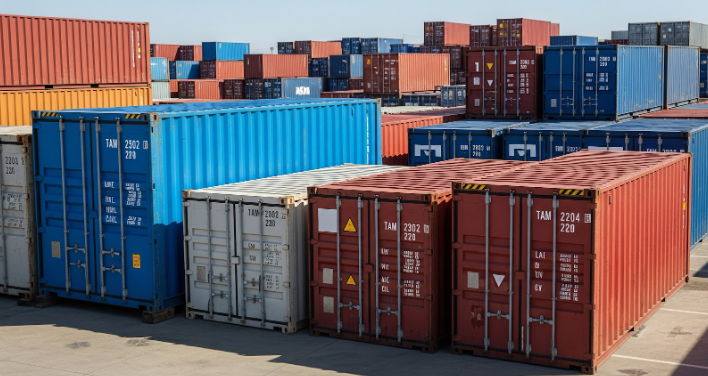In recent years, the demand for shipping containers for sale across Canada has surged—especially among construction and industrial buyers looking for fast, flexible storage and worksite solutions. But as demand climbs, so does pricing volatility, making it harder for decision-makers to secure dependable containers without blowing the budget.
Let’s explore what drives price swings, how to evaluate suppliers, and how to avoid common pitfalls that can cost your project time and money.
Container Pricing Isn’t Random—It Follows Global Trends
The cost of shipping containers is influenced by more than just local supply and demand. Global trade activity, container manufacturing rates, steel costs, and seasonal usage all play a role.
For example, during peak construction months (April–October), availability tightens and prices typically spike. If a global shipping disruption causes a shortage of cargo-worthy containers, that too can impact costs across North America—even in smaller regional markets.
Tip: Buyers can stabilize pricing by purchasing in the off-season, securing pre-orders, or locking in multi-unit deals with suppliers who maintain regional stock year-round.
Scams Are Real: Know Who You’re Buying From
As container sales have gone mainstream, so have scam listings—especially on public marketplaces like Kijiji and Facebook. Buyers may be drawn in by unusually low prices, only to lose deposits to unverified sellers.
Red flags include:
- Prices significantly below market value
- No physical yard address or verification
- Pressure to pay quickly via e-transfer
- No option to view the container (live or via video)
Instead, look for suppliers with a track record of delivering to construction firms, clear warranty terms, and options to physically view or video-inspect containers before delivery. Trusted providers often operate under consistent branding and provide fixed yard locations across regions.
If you’re looking for reliable shipping containers for sale from a Canadian supplier, ensure they offer detailed spec sheets, delivery logistics, and unit condition guarantees.
Grades, Specs, and What to Expect on Arrival
Not all containers are equal. For industrial and construction use, clarity around container condition and grading is key. Most common grades include:
- Cargo-Worthy (CW): Structurally sound for intermodal use
- Wind and Watertight (WWT): Good for static storage, but not suitable for shipping
- As-is: May have damage or rust—not recommended for professional use
Make sure the supplier outlines:
- Age of the container (often 10–15 years for used units)
- Door functionality
- Interior flooring condition
- Signs of corrosion or prior repair
Photographs can help, but independent verification or video inspection adds another layer of buyer protection.
Upfront Cost vs. Flexibility: Rent-to-Own and Financing
For many contractors and builders, capital outlay is a concern—especially when multiple containers are needed. That’s why suppliers increasingly offer financing or rent-to-own options, helping firms spread out costs over 12–36 months.
Before signing, check for:
- Total interest or fees over the term
- Early buyout options
- Maintenance or swap guarantees
Some buyers use leasing as a trial period, then purchase once a unit proves its value in the field.
Final Thoughts: What to Do Next
For construction and industrial buyers, the key to value isn’t just in the price—it’s in sourcing the right container from a trustworthy supplier who aligns with your timeline, quality expectations, and budget. By planning purchases during off-peak seasons, verifying suppliers, and understanding the fine print on condition and financing, you can make informed, cost-effective decisions that support your operations long-term.
Additional Resources
Explore Steel Shipping Containers for long-term site storage and weather-resistant performance in challenging climates.















